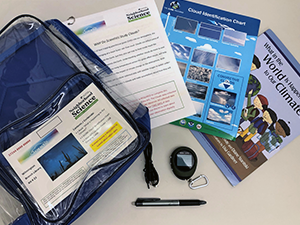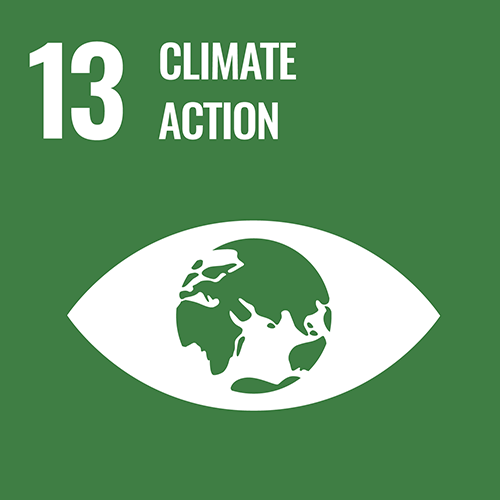
Why Do Scientists Study Clouds?
Clouds affect the overall temperature of the Earth and play a large role in controlling the planet's long-term climate. Scientists need accurate data on clouds to understand their impact over time. Satellites only see the top of the clouds while we see the bottom—together we get a much more complete picture of clouds and their effects in the atmosphere.

What's in the Kit?
- 1 Book: What is Happening to Our Climate?
- 1 GLOBE Cloud Identification Chart
- 1 Mini GPS Location Finder
- 1 USB Charging Cable
- 1 Sharpie
- 1 Eraser
- 1 Observation Journal
- Safety Rules
Relevant Sustainable Development Goals (SDGs)
How to Help Scientists Collect Data?
Step 1
Use the Mini GPS Location Finder device in the kit for location coordinates and elevation information. Press and hold the middle button to turn on the GPS and give it 8-15 minutes to connect to a satellite. Once it is connected, the screen will display a signal icon with bars and a blinking black bullet. Press the top button three times to see coordinates and two more times to see the elevation information measured in meters. Press and hold the middle button to turn the GPS off.
Step 2
Use the GLOBE Clouds: Step-by-Step Guide, and Cloud Identification Charts in the kit to help you identify the clouds in the sky. Use the data card to record your observations. Don’t forget to record your observation date, time, and location coordinates on the data card.
Step 3
When you have access to an internet/Wi-Fi-connected computer or smart device, go to Observation Anonymous and select GLOBE Observer: Clouds to access the electronic clouds observation form. Key in the observation data you just recorded on the data card and select Submit.
Step 4
Browse the GLOBE Observer Clouds page for an overview, video tutorials, and additional resources.
Step 5
Complete the paper survey included in the instructions packet and return the kit to the library so someone else can contribute.
